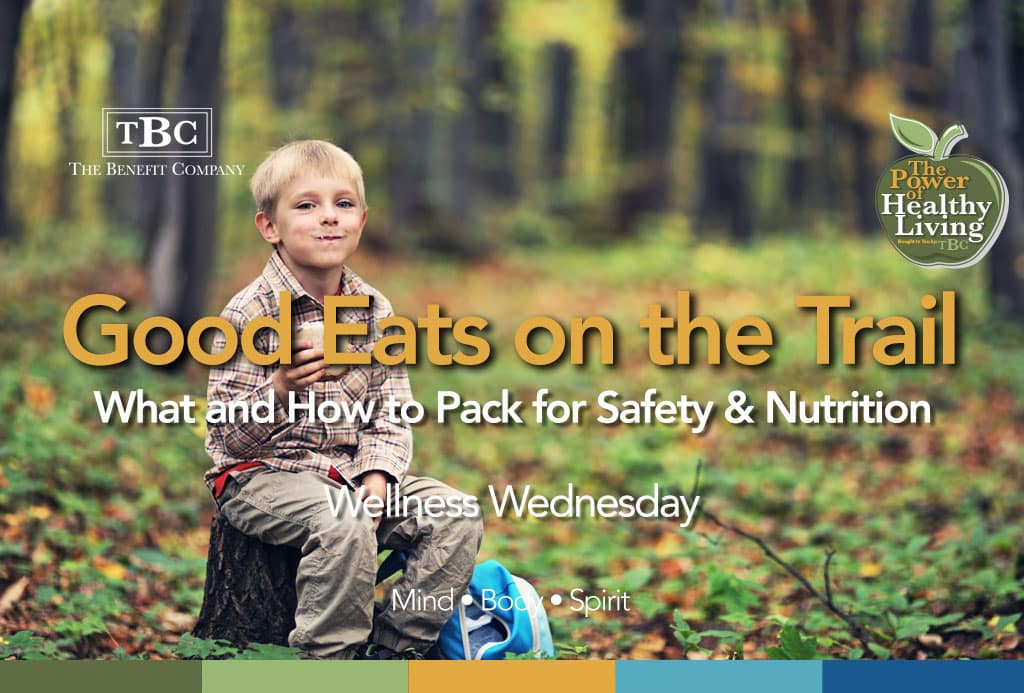Heading out this fall for an afternoon hike to take in the changing leaves? Setting up camp for the night (or several)? Whether it’s one of these or both, make sure you’ve got the right supplies – especially food and water. And while it may not be hot out anymore, you still have to take steps to ensure your food and water are safe. Here are some tips for your outdoor adventures.
- Plan ahead. Think about the length of your trip and how much food and drink you’ll realistically need.
- If bringing perishable food, pack it securely in plastic wrap or containers. Keep everything chilled (under 40° F). You can freeze juice boxes and/or bottled water, which will keep your food cold while thawing for later use. Frozen gel packs work well, too.
- If possible, pack foods in a cooler. If you’re car camping, keep the cooler in the car, not the hot trunk. Use plenty of ice packs.
- Never leave perishable food unrefrigerated for more than two hours, or only one hour if outdoor temps are 90° F or above.
- If you’ll be cooking raw meat, be sure it’s cooked to a safe internal temperature. That’s 160° F for ground meat, 165° F for hot dogs and poultry, and at least 145° F for things like chops and steaks.
- Keep raw foods and cooked foods separate to avoid cross-contamination.
- Bring antibacterial wipes, biodegradable soap, and/or moist towelettes. Wash your hands often, especially before eating.
- If you won’t have access to clean drinking water, pack purification tablets or a portable water filter. Boiling water for at least a minute is another option.
- Stay well hydrated, even if it’s not hot out. Drink at least four cups of water before setting out — that way you won’t have to carry as much water with you. After that, drink about two cups of water for every hour you’re hiking or otherwise active.
- Get creative with seasonal foods. Apples, pears, sweet potatoes and squash, for example, are at their delicious peak in the fall. Check online or in cookbooks for recipes.
Great foods to pack
Not sure what to pack when venturing out? Think lightweight, nutritious, and filling. Things like nuts, dried fruit, and energy and granola bars (or just plain granola) all pack a punch. Jerky and pouches of tuna are great protein sources. If you’ll be cooking, oatmeal, pasta and grains like quinoa, rice or couscous, and dried soups are perfect (just make sure you use clean water). And don’t forget the makings for s’mores, if you’ve got room.
Leave it like you found it
Don’t spoil the natural beauty you’re enjoying by leaving litter behind. Even leaving food scraps isn’t a great idea, because wild animals shouldn’t eat human food. Bring along something to stash your garbage in, and then dispose of it properly once you’ve left the trail or campground.
Watch the weather report and plan accordingly. Keep safety top of mind. Then sling on that backpack and head out to enjoy the season, the beauty of nature and the satisfaction that comes from being active.
Sources:
Academy of Nutrition and Dietetics. 5 food tips for camping and hiking. 8/2/2017.
https://www.eatright.org/food/planning-and-prep/snackand-meal-ideas/food-tips-for-camping-and-hiking (Accessed 7/9/18)
Academy of Nutrition and Dietetics. Hiking and camping with food safety in mind. 7/3/2018. https://www.eatright.org/homefoodsafety/safety-tips/outdoor-dining/hiking-and-camping-with-food-safety-in-mind (Accessed 7/9/18)
Centers for Disease Control and Prevention. Camping health and safety tips. 12/23/2015. https://www.cdc.gov/family/camping/ (Accessed 7/9/18)
International Food Information Council Foundation. Nutrition for the trail. 4/27/2015. https://www.foodinsight.org/best-hiking-snacksnutrition-lightweight (Accessed 7/9/18)
International Food Information Council Foundation. Keep the great outdoors great: reducing food waste on a hike. 7/11/2016.
 The Benefit Company
The Benefit Company